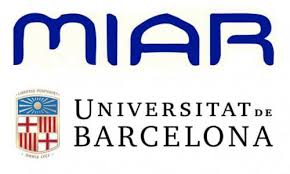Fire impacts on concrete structures. A brief review
Abstract
This paper aims to present briefly discuss some essential topics about the impact of fire on concrete structures and the possible deleterious effects of high temperatures on the concrete material itself. A literature review was conducted, addressing the behavior of concrete (seen as a material and as a structural element) when exposed to exceptional and severe actions from a fire scenario, contributing to demystify some beliefs and doubts about the spalling phenomenon and the behavior of reinforced concrete under fire situations.
Downloads
References
Abrams, M. S. (1971), “Compressive strength of concrete at temperatures to 1600F”. American Concrete Institute, Special Publication, V 25, p.33-58.
American Concrete Institute (2008), ACI 318-08: building code requirements for reinforced concrete. Farmington Hills: ACI.
American Concrete Institute (1989), ACI 216R-89: guide for determining the fire endurance of concrete elements. Farmington Hills: ACI.
American Society for Testing and Materials (2007), E 119-07: standard test methods for fire of building construction and materials. West Conshohocken: ASTM.
Associação Brasileira de Normas Técnicas (1997), NBR 13860: glossário de termos relacionados com a segurança contra incêndio. Rio de Janeiro: ABNT.
Associação Brasileira de Normas Técnicas (2001), NBR 14432: exigência de resistência ao fogo de elementos construtivos de edificações – Procedimento. Rio de Janeiro: ABNT.
Associação Brasileira de Normas Técnicas (2001), NBR 5628: componentes construtivos estruturais: determinação da resistência ao fogo. Rio de Janeiro: ABNT.
Britez, C. A. (2011), “Avaliação de pilares de concreto armado colorido de alta resistência, submetidos a elevadas temperaturas”. Tese (Doutorado em Engenharia), Escola Politécnica, Universidade de São Paulo, São Paulo: USP, 252 f.
Cabrita Neves, I.; Rodrigues, J. P. C.; Loureiro, A. P. (1996), “Mechanical properties of reinforcing and prestressing steels after heating”. Journal of Materials in Civil Engineering, 8 (4), p.189-194, https://doi.org/10.1061/(ASCE)0899-1561(1996)8:4(189)
Chana, P.; Price, B. (2003), “The Cardington fire test”. Concrete, 37 (1), p. 28-33, Jan.
Costa, C. N. (2008), “Dimensionamento de elementos de concreto armado em situação de incêndio”. Tese (Doutorado em Engenharia), Escola Politécnica, Universidade de São Paulo, São Paulo: USP, 405 f.
Costa, C. N.; Silva, V. P. (2003), “Dimensionamento de estruturas de concreto armado em situação de incêndio: métodos tabulares apresentados em normas internacionais”. In: V Simpósio EPUSP sobre Estruturas de Concreto, 5, 2003, São Paulo.
Costa, C. N.; Silva, V. P. (2006), “Revisão histórica das curvas padronizadas de incêndio”. In: Seminário Internacional NUTAU: Tecnologia de Durabilidade, São Paulo: NUTAU-USP.
Costa, C. N.; Silva, V. P. (2004), “Considerações sobre a segurança das estruturas de concreto em situação de incêndio”. In: Seminário Internacional NUTAU: Demandas Sociais, Inovações Tecnológicas e a Cidade, 2004, São Paulo: NUTAU-USP. Disponível em: www.lmc.ep.usp.br/people/valdir/fire_safety/Nutau2004_concreto.pdf. Acesso em: nov. 2007.
Costa, C. N.; Figueiredo, A. D.; Silva, V. P. (2002), “Aspectos tecnológicos dos materiais de concreto em altas temperaturas”. In: Seminário Internacional NUTAU 2002. Sustentabilidade, Arquitetura e Desenho Urbano. São Paulo: NUTAU/FUPAM/FAUUSP.
European Committee for Standardization (2003), Eurocode 2: design of concrete structures: part 1-2: general rules: structural fire design. prEN 1992-1-2. Brussels, Belgium, 106 p.
Farny, J. A.; Panarese, W. C. (1994). “High-strength concrete”. Skokie, Ill.: Portland Cement Association, 53 p.
(fib) Fédération Internationale Du Béton (2007), “Fire design of concrete structures – materials, structures and modeling – State-of-art report”. Lausanne, fib. 97 p. (Bulletin d’information, 38).
Helene, P.; Hartmann, C. T. (2003), “HPCC in Brazilian office tower”. Concrete International, v. 25, n. 12, p. 64-68, Dec. 2003.
Holmes, M.; et al. (1982), “The effects of elevated temperatures on the strength properties of reinforcing and prestressing steels”. Structural Engineer, v. 60B, p. 7-13.
Jacobs, J. -P. (2007), “Comprehensive fire protection and safety with concrete”. Brussels: European Concrete Platform. 30p. Disponível em: http://www.britishprecast.org/publications/documents/06-Fire_brochure-3004071.pdf. Acesso em: 22 Jun. 2011.
Kalifa, P.; Menneteau, F.-D.; Quenard, D. (2000), “Spalling and Pore Pressure in HPC at High Temperatures”. Cement and Concrete Research, 30 (12), https://doi.org/10.1016/S0008-8846(00)00384-7
Khoury, G. A.; Anderberg, Y. (2000), “Concrete spalling review”. [S.l.]: FSD, 2000. 60 p. Report submitted to the Swedish National Road Administration.
Kodur, V. K. R.; et al. (2000), “Experimental studies on the fire endurance of high-strength concrete columns”. Canada: IRC/NRC, 146p. (NCR-CNRC Intemal Report 819).
Kodur, V. K. R.; et al. (2005), “Guidelines for fire resistance design of high-strength concrete columns”. Ottawa, Ontário, Canadá: IRC/NRC. (Report NRCC-47729). Disponível em: <http://irc.nrc-cnrc.gc.ca/pubs/fulltext/nrcc47729/>. Acesso em: nov. 2007.
Leonardo Da Vinci Pilot Project CZ/02/B/F/PP-134007 (2005), “Handbook 5: design of buildings for the fire situation”. Luxembourg: European Commission. Implementation of Eurocodes.
Morita, T.; et al. (2002), “An estimation method for fire resistance of reinforced concrete elements considering spalling”. Proceedings of the 1st Fib Congress. p. 119-128.
Neville, A. M. (1981), “Properties of concrete”. 3rd ed. London; Marshfield, Mass.: Pitman. 779 p.
Ongah, R.; Mendis, P. A.; Sanjayan, J. G. (2002), “Fire performance of high strength reinforced concrete walls”. In: Proceedings of the Australasian Conference On The Mechanics Of Structures And Materials, 17, Gold Coast, Austrália. Lisse: Balkema, p. 199-204. Disponível em: http://www.civenv.unimelb.edu.au/aptes/publications/Fire-HSC_walls.pdf. Acesso em: nov. 2007.
Phan, L. T. (2002), “High-strength concrete at high temperature: an overview”. In: Building and fire research laboratory. Gaithersburg: National Institute of Standard and Technology, Disponível em: http://www.fire.nist.gov/bfrlpubs/build02/PDF/b02171.pdf. Acesso em: nov. 2007.
Phan, L. T. (1996), “Fire performance of high-strength concrete: a report of the state-of-the-art”. In: Building and fire research laboratory. Gaithersburg: National Institute of Standard and Technology, NISTIR 5934. Disponível: http://www.fire.nist.gov/bfrlpubs/build96/art075.html. Acesso em: nov. 2007.
Purkiss, J. A. (1996), “Fire safety engineering design of structures”. Oxford: Butterworth-Heinemann, 369 p.
Seito, A I.; et al. (2008), “A segurança contra incêndio no Brasil”. São Paulo: Projeto. 496 p.
Taylor, H. F. W. (1990), “Cement chemistry”. London: Academic Press, 475 p.
The Concrete Centre (2004), “Concrete and fire: using concrete to achieve safe, efficient buildings and structures”. Camberley, Surrey, England. Disponível em: http://www.mace.manchester.ac.uk/project/research/structures/strucfire/DataBase/References/Concrete%20&%20Fire%203557%20lo%20res.pdf. Acesso em: nov. 2007.
_______________________________
License in effect from September 2020
You are free to:
- Share — copy and redistribute the material in any medium or format for any purpose, even commercially.
- Adapt — remix, transform, and build upon the material for any purpose, even commercially.
- The licensor cannot revoke these freedoms as long as you follow the license terms.
Under the following terms:
- Attribution — You must give appropriate credit , provide a link to the license, and indicate if changes were made . You may do so in any reasonable manner, but not in any way that suggests the licensor endorses you or your use.
- No additional restrictions — You may not apply legal terms or technological measures that legally restrict others from doing anything the license permits.
Notices:
You do not have to comply with the license for elements of the material in the public domain or where your use is permitted by an applicable exception or limitation .
No warranties are given. The license may not give you all of the permissions necessary for your intended use. For example, other rights such as publicity, privacy, or moral rights may limit how you use the material.





















.png)














